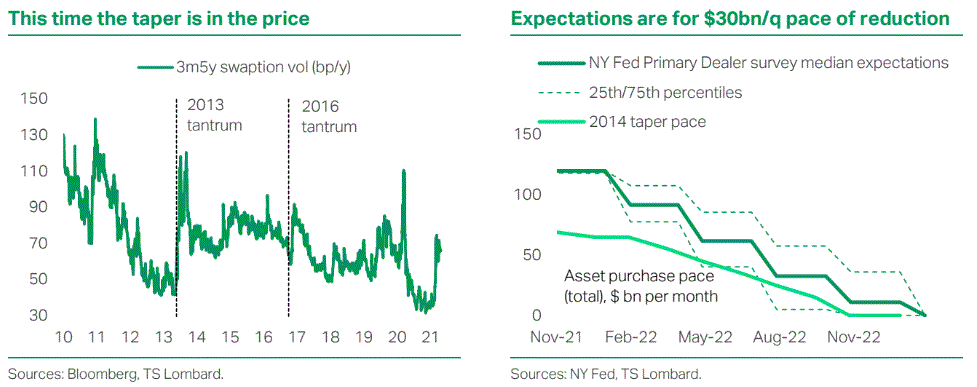TS Lombard with the note:
- The next Fed risk is the taper, likely to be announced in the summer.This is priced in–and the effect on net issuance is smaller than in 2014 or 2017
- But no matter how well telegraphed, this taper will still change the market as a price-insensitive buyer leaves and the clock for rate hikes starts ticking
- Time to reduce risk? Not yet, but we monitor long-term vols to enter hedges: the taper risk is not the announcement but (later) the process itself

Here we go again. The benchmark US 10y yield is around 1.6% and the Federal Reserve is close to a major change in its asset purchase programme. We expect the Fedto announce the taper in the summer. When we were here in 2013(before the first round of tapering)and 2016(before quantitative tightening, QT), bond markets had tantrums, which were ultimately the result of investor complacency: in both cases, rates volatility was at cycle lows and in 2013 the 10yyield was lower than fundamental market conditions required because eof complacency around presumed continued central bank support.
However,the taper is in the price this time round. The chart below left shows that rates volatility is already off its cycle lows (we noted back in December that it was too low for the likey taper risks this year). And we reckon 10y yields around current levels are fair for market conditions: unlike in 2013, when the FOMC dot-plot forecast implied terminal rates at 4%, the current long-run dot is 2.5%; this means there is little headroom for a tantrum from a starting point of 1.6% to a terminal rate of 2.5%. Furthermore, as the chart below right shows, primary dealers expect the Fed to cut its asset purchase pace to zero by the end of 2022. Both risk pricing and survey expectations suggest the taper is currently in the price.

